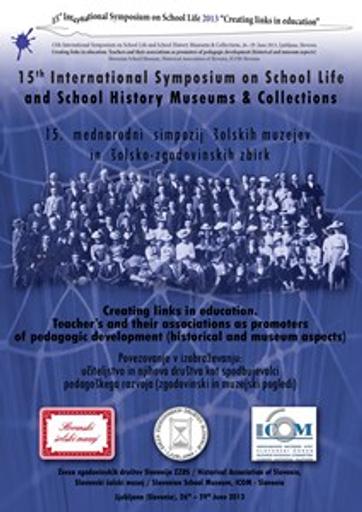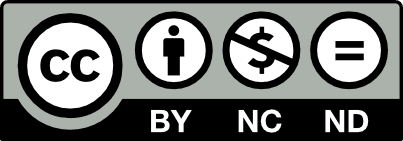/
Dogodki
/
Konference
From bogeyman to educator. Transformations in the teacher's job in the Netherlands, circa 1780-1920


To delo avtorja Jacques Dane je ponujeno pod Creative Commons Priznanje avtorstva-Nekomercialno-Brez predelav 4.0 Mednarodna
Datoteke (1)
Opis
In the 1920s, all classrooms within public and denominational education in the Netherlands were established in recognisable buildings. Desks were set-up in successive rows. Pupils of the same age and of equal study levels were taught by a man, or woman, who had enjoyed sound vocational training in this field. The teachers had schoolbooks and many educational appliances at their disposal for explaining the lessons, such as stuffed animals for biology classes and wall charts for history lessons. A century and a half earlier, around 1780, the education system in the Netherlands was set-up in an entirely different way. Instead of classical teaching pupils were taught individually in a simple environment which is absolutely incomparable to the classroom of 1920. Boys and girls of different ages all sat in a disorderly manner at long tables and even on the ground. Hardly any schoolbooks were available. Grades and report cards did not yet exist. Paintings and drawings from the seventeenth and eighteenth century depicting classrooms often show somewhat disorderly looking rooms with a teacher in charge, holding a rod or other instrument of punishment. In this talk I will discuss the changes between 1780-1920 within the Dutch educational system: What was the role of the Dutch government and the teachers associations in the transformation and professionalization of male and female teachers the classroom?
Metapodatki (12)
- identifikatorhttps://hdl.handle.net/11686/37692
- naslov
- From bogeyman to educator. Transformations in the teacher's job in the Netherlands, circa 1780-1920
- Van boeman tot onderwijzer. Veranderingen in het onderwijzersberoep, circa 1780-1920
- ustvarjalec
- Jacques Dane
- soavtor
- Uwe Krebs (mod.)
- predmet
- zgodovina
- šolstvo
- muzej
- history
- school system
- museum
- opis
- In the 1920s, all classrooms within public and denominational education in the Netherlands were established in recognisable buildings. Desks were set-up in successive rows. Pupils of the same age and of equal study levels were taught by a man, or woman, who had enjoyed sound vocational training in this field. The teachers had schoolbooks and many educational appliances at their disposal for explaining the lessons, such as stuffed animals for biology classes and wall charts for history lessons. A century and a half earlier, around 1780, the education system in the Netherlands was set-up in an entirely different way. Instead of classical teaching pupils were taught individually in a simple environment which is absolutely incomparable to the classroom of 1920. Boys and girls of different ages all sat in a disorderly manner at long tables and even on the ground. Hardly any schoolbooks were available. Grades and report cards did not yet exist. Paintings and drawings from the seventeenth and eighteenth century depicting classrooms often show somewhat disorderly looking rooms with a teacher in charge, holding a rod or other instrument of punishment. In this talk I will discuss the changes between 1780-1920 within the Dutch educational system: What was the role of the Dutch government and the teachers associations in the transformation and professionalization of male and female teachers the classroom?
- In 1920 waren alle Nederlandse klaslokalen voor openbaar en bijzonder onderwijs gevestigd in herkenbare gebouwen. Schoolbanken stonden in rijen achterelkaar opgesteld. Leerlingen van dezelfde leeftijd en een gelijk leerniveau kregen onderwijs van een man of een vrouw die daarvoor een gedegen beroepsopleiding had genoten. Er werd les gegeven uit schoolboeken en om de leerstof uit te leggen, beschikte het onderwijzend personeel over talloze leermiddelen, zoals opgezette dieren voor de biologieles en schoolplaten voor de geschiedenisles. Anderhalve eeuw daarvoor, rond 1780, zag het Nederlandse onderwijssysteem er geheel anders uit. Er werd geen klassikaal, maar hoofdelijk onderwijs gegeven in een eenvoudige ruimte die in geen enkel opzicht te vergelijken is met het klaslokaal van 1920. Jongens en meisjes van diverse leeftijden zaten door elkaar heen aan lange tafels en zelfs op de grond. Er waren nauwelijks leerboeken. Cijfers en rapporten bestonden nog niet. Zeventiende- en achttiende-eeuwse schilderijen en prenten waarop klaslokalen staan afgebeeld, tonen vaak enigszins wanordelijke uitziende ruimtes, met aan het hoofd een onderwijzer die een plak of een ander strafinstrument in zijn hand vasthoudt. In mijn presentatie zal ik de veranderingen tussen 1780-1920 in het Nederlandse onderwijssysteem bespreken: Wat was de rol van enerzijds de overheid en anderzijds de lerarenorganisaties in de veranderingen en de professionalisering van het onderwijzersberoep?
- založnik
- Slovenski šolski muzej
- Zveza zgodovinskih društev Slovenije
- ICOM Slovenija
- Inštitut za novejšo zgodovino
- datum
- 2013
- 28. 06. 2013
- tip
- video
- jezik
- Angleščina
- jeDelOd
- pravice
- licenca: ccByNcNd
